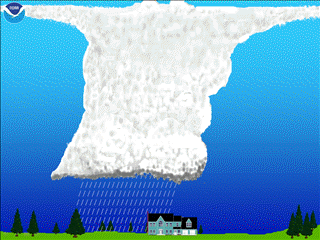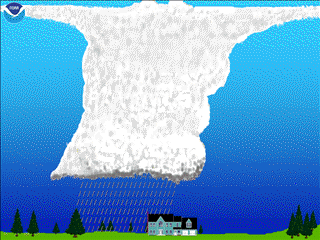While most flashes consist of leader(s)/return stroke(s) combinations (Figure 1), some flashes contain what is called continuing current. Rather than charge flowing in one or more separate return strokes, charge flows continuously over a longer period of time through the lightning channel (Figure2). Visually, flashes containing continuing current give the appearance of a continuously illuminated channel, as opposed to flickering, with varying degrees of brightness corresponding to the amount of charge movement. Flashes which contain both return strokes and continuing current are also common. These flashes will flicker, leaders/return strokes, and also have short periods of constant illumination, continuing current.
Lightning flashes containing continuing current are particularly important because they are more likely to start fires. In a typical return stroke, electricity flows for only a short period and does not generate the heat required to ignite a fire; however, in continuing current, electricity flows over a much longer period of time and will generate considerably more heat. Consequently, flashes with continuing current are much more of a fire concern. Because of the heat they generate, flashes with continuing current are sometimes referred to as hot lightning while flashes containing only return strokes are referred to as "cold lightning."
 Figure 1 Figure 1 |
 Figure 2 |
To learn more, see Thunder or return to Contents page